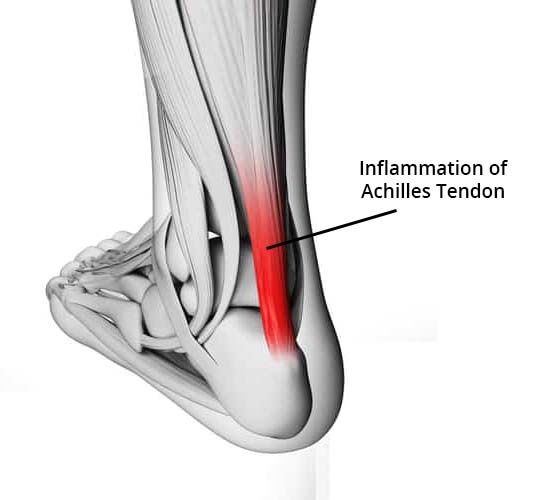What is it?
Your Achilles Tendon is the thick tendon at the back of your ankle that connects your calf muscle to your heel bone. There are two common causes for pain along the tendon usually as a result of a sudden sharp movement which causes the tendon to tear, or an overload of the tendon over a period of time causing inflammation of the tendon.
How does it get injured?
Tearing the Achilles Tendon occurs without any warning due to a sudden force or pushing off. It is most common during sports requiring changing direction or sudden acceleration eg netball, touch rugby, sprinting. This sudden force causes the tendon to tear either partially or a full thickness tear. Achilles Tendinosis is a repetitive overload of the tendon at an uneven angle. This occurs over a period of time and is can be caused by a number of biomechanical factors including weak or tight hips, poor footwear, weak or tight calf muscles, compensating for a previous injury, or a sudden increase in training load.
What does it feel like?
Acute Achilles Tendon rupture feels like someone has shot you in the back of your leg. Patients often describe looking around to see who had just kicked them in the leg or hit them with something but nobody is there. You are often unable to walk due to weakness or feeling like you cannot push off that foot when walking. Chronic Achilles Tendinosis is a gradual worsening of achy pain anywhere along the Achilles tendon. Due to the inflammation over night you will feel most stiff and sore in the mornings with most pain during the first steps when getting out of bed. It is common to feel better later in the day or after doing short periods of light exercise eg short walks but the pain can return later in the day once you are resting again. You may notice a gradually increasing swelling or thickness around the painful area.
How are they diagnosed?
Your physiotherapist or doctor is likely to diagnose an acute Achilles tendon rupture with the calf squeeze test. This requires you to kneel or lie on the bed while they squeeze your calf. If your foot moves then the Achilles remains intact however if it does not then you have a complete tear. A complete tear will be referred to the hospital for further treatment including casting or moon boot.
What can Back in Action do to help?
The exact cause of overload to your Achilles tendon needs to be determined so your Back In Action Physiotherapist will take the time to fully assess you from your lower back all the way to your footwear. Once a comprehensive assessment has been completed they will, together with you, make a rehabilitation plan and discuss necessary modifications for optimal healing of the tendon. We may use mobilisations, massage and other techniques to encourage decrease of the inflammation and pain at the tendon and surrounding muscles. We will work with you to lengthen or strengthen the tendon and correct biomechanical faults that may have caused the injury to get you back to health as soon as possible.

